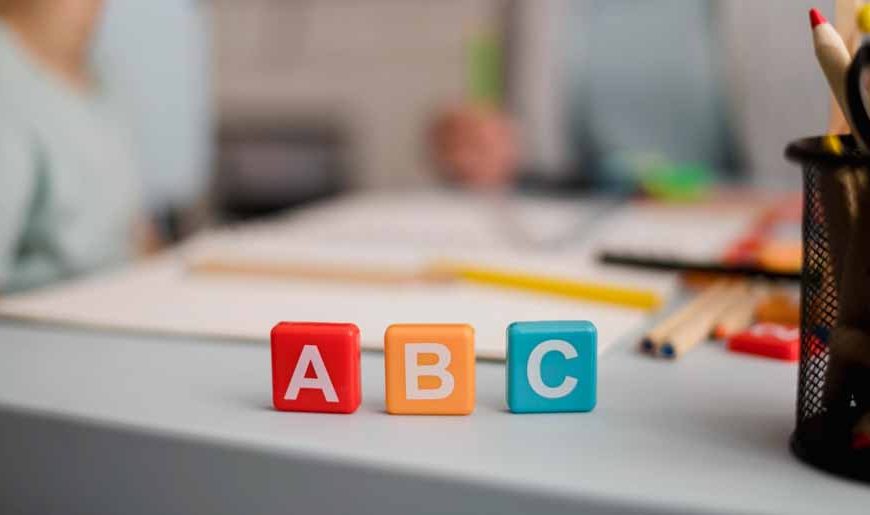Preschoolers are at a crucial stage in their development, where they are beginning to explore language and literacy in a more structured way. Engaging them in activities that make learning enjoyable is essential for their cognitive growth. One such exciting and beneficial literacy activity for preschoolers is “Building Names.” This activity not only introduces them to the world of letters and words but also enhances their fine motor skills, social interaction, and overall cognitive development.
The Importance of Early Literacy:
Before delving into the specifics of the “Building Names” activity, it’s crucial to understand why early literacy is so vital for preschoolers. Early literacy lays the foundation for future reading and writing skills, which are fundamental to academic success. Preschoolers who engage in literacy activities develop a strong vocabulary, better communication skills, and a love for learning.
The Role of Name Recognition:
Names hold a special place in a child’s world. Recognizing and writing one’s name is often the first step towards literacy. A child’s name is a powerful tool for early learning because it is personal and meaningful to them. It serves as a gateway to understanding letters, recognizing patterns, and eventually forming words.
The “Building Names” Activity:
- Materials Needed:
- Markers or Stickers:
- Alphabet Flashcards:
- Flat Surface:
Building Blocks: Use large building blocks that are easy for preschoolers to handle. Different colors and shapes can add an element of excitement.
Choose markers or stickers in various colors to write or label the letters on the building blocks.
These can be used as a reference for the child to match the letters on the blocks.
A clean and spacious area where the child can easily arrange and rearrange the blocks.
Instructions:
- Introduce the Activity:
- Personalize the Blocks:
- Alphabet Reference:
- Building the Name:
- Say the Letters Aloud:
- Explore Colors and Shapes:
- Extend the Activity:
- Group Activity:
Begin by explaining the activity to the preschoolers. Show them the building blocks, the markers or stickers, and the alphabet flashcards.
Write or place stickers of the child’s name on the blocks. Ensure that each block contains one letter of their name.
Use the alphabet flashcards to help the child identify each letter of their name. This can be a collaborative effort between the child and the facilitator.
Encourage the child to arrange the blocks in the correct order to spell their name. This step involves recognizing the sequence of letters, a crucial skill in early literacy.
As the child builds their name, encourage them to say each letter aloud. This not only reinforces letter recognition but also helps in phonemic awareness.
Take advantage of the different colors and shapes of the blocks to make the activity more engaging. You can ask questions like, “Can you find a blue square block for the letter ‘A’?”
Once the child is comfortable with building their name, introduce the concept of other familiar words. This could include the names of family members, pets, or simple words like “sun” or “cat.”
To promote social interaction, consider turning this into a group activity. Each child can build their name, and then the group can come together to build a communal structure using the blocks.
Benefits of the “Building Names” Activity:
Letter Recognition: The activity helps preschoolers recognize and become familiar with the letters of the alphabet, especially those in their name.
- Fine Motor Skills:
- Phonemic Awareness:
- Personal Connection:
- Spatial Awareness:
- Social Interaction:
- Color and Shape Recognition:
Handling the building blocks and arranging them in the correct order enhances fine motor skills, a crucial aspect of early childhood development.
Saying the letters aloud while building the name promotes phonemic awareness, laying the groundwork for reading.
Using the child’s name adds a personal touch to the activity, making it more meaningful and engaging for them.
Arranging blocks in a specific order requires spatial awareness, a skill that is honed through this activity.
When done in a group setting, the activity promotes social interaction, cooperation, and communication among preschoolers.
Incorporating different colors and shapes into the activity provides an additional layer of learning.
Tips for Facilitators:
- Be Patient:
- Positive Reinforcement:
- Build on Interests:
- Repeat the Activity:
- Encourage Creativity:
Allow the child to take their time in arranging the blocks. Offer guidance when needed but let them explore and learn at their own pace.
Celebrate small victories. Positive reinforcement, such as clapping or verbal praise, encourages the child’s efforts and boosts their confidence.
If the child shows interest in a particular letter or color, incorporate more activities around that to keep them engaged.
Repetition is key to learning. Encourage the child to build their name regularly to reinforce letter recognition and sequencing.
Once the child is comfortable with their name, allow them to get creative. They can build structures using the blocks, incorporating letters and words into their creations.
Expanding the Horizon: Beyond Names and into Words:
While “Building Names” is an excellent starting point for literacy development, it’s crucial to recognize that this activity can serve as a springboard for broader language exploration. Once a child has mastered building their name, educators and parents can expand the activity to include other words relevant to the child’s life and interests.
- Themed Blocks:
- Building Simple Sentences:
- Story Building:
- Interactive Story Time:
- Word Families:
Introduce themed blocks that represent objects or concepts familiar to the child. For example, if a child has a fascination with animals, incorporate blocks featuring letters associated with various animals. This extension not only reinforces letter recognition but also expands their vocabulary in a way that aligns with their interests.
As the child becomes more comfortable with individual words, take the activity a step further by encouraging the construction of simple sentences. Use additional blocks to introduce sight words or commonly used words like “the,” “and,” and “is.” This progression transforms the activity into a more advanced literacy exercise, fostering an understanding of sentence structure.
Harness the creativity of preschoolers by encouraging them to build stories using the blocks. Each block can represent a different element of the story – characters, setting, and events. This not only enhances literacy skills but also nurtures imagination and storytelling abilities.
Combine “Building Names” with interactive story time by constructing scenes or characters from a favorite book. This interdisciplinary approach reinforces the connection between written words and the visual representation of those words, strengthening comprehension skills.
Introduce word families by creating blocks with rhyming words. For instance, if the child’s name ends with the “-at” sound, include blocks with words like “cat,” “mat,” and “bat.” This not only reinforces phonemic awareness but also provides a foundation for understanding word patterns and spelling.
The “Building Names” literacy activity is a versatile and enjoyable way to introduce preschoolers to the world of letters and words. Through the manipulation of building blocks, children not only enhance their literacy skills but also develop fine motor skills, spatial awareness, and social interaction. This activity is not just an educational tool but a stepping stone towards a lifelong love for learning and literacy. By making learning a fun and personalized experience, we set the stage for a future where these preschoolers become confident and capable readers and writers.
For more such interesting blogs, Visit EuroKids
















